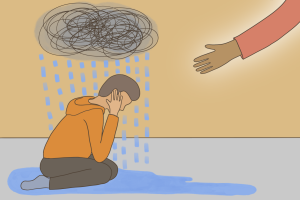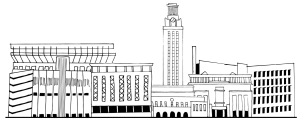The Moody Center is changing Austin’s music scene
January 15, 2023
The Austin music scene is known for elevating new artists. From underground musicians to A-list celebrities, artists come to Austin to build their brands. However, Austin has historically not had a venue suitable enough to provide space for big-name celebrities. Venues like Stubb’s Waller Creek Amphitheatre have minimal capacity for artists looking to grow their fanbase.
The addition of the Moody Center has given Austin and the Central Texas area a home for fans to experience their favorite artists in comfortable conditions. This space also diversifies Austin’s music scene beyond the typical indie and country artists.
I recently went to a Giveon concert at Stubb’s and was surprised by the limited venue space. Although Giveon averages about 24.8 million monthly listeners on Spotify, the amphitheater had a limited capacity of 2,500 people. Giveon performed an amazing show, but we were all packed in the venue like sardines. In addition, since Stubb’s is an outdoor venue, many fans were passing out because of the weather combined with everyone’s body heat.
Besides the Moody Center, the next largest concert venue is the Moody Amphitheatre, which holds about 5,000 people. Many fans of popular celebrities are forced to drive to Dallas or Houston since those cities have larger concert halls. The Moody Center holds over 15,000 people, which is a competitive space compared to the American Airlines Center in Dallas and the Toyota Center in Houston.
Paris Eskew, a junior advertising major, recently went to the Moody Center to see Jack Harlow and was happy to see that bigger, more diverse acts were coming to Austin.
“There are some shows, but the majority are smaller acts in Austin,” said Eskew. “The Moody Center offers bigger acts to come. Before, if you weren’t into indie music or country music, you wouldn’t get to see a lot of concerts unless they were smaller artists.”
The majority of niche artists in the city are confined to specific venues based on their genre. For instance, Antone’s Nightclub is one of the few places in Austin that recruits blues musicians. While clubs that hold specific genres are important to maintain Austin’s music culture, the Moody Center combines multiple genres in one vicinity.
As Austin’s population grows and expands, Austin’s music scene does as well. There is a much higher demand for all kinds of music such as hip-hop and rock. The Moody Center has provided a vast range of performances from entertainers like Bill Burr, Cirque du Soleil and the Trans-Siberian Orchestra.
The center’s close proximity to campus has directly benefited students because now they are able to see their favorite artists within a 10-minute walk from their dorm. This gives UT students an opportunity that many other college students can only dream of.
Michael Owens, vice president of programming for the Moody Center, has taken a proactive approach to recruit big-name performers by showing that there is a huge market in Austin.
“The market has seen such explosive growth over the past decade and beyond that it is hard to believe there isn’t an audience for most arena-touring artists and shows … and our ticket sales so far certainly make a compelling case for that,” Owens said, in an email. “We’re seeing a historically unmet demand for all types of music and programming, including Latin music, hip-op, country, comedy and rock.”
Austin has been titled the Live Music Capital of the World, and the Moody Center is only expanding that title to include more genres and bigger artists.
DuBois is a public relations and sociology sophomore from Killeen, Texas.
















